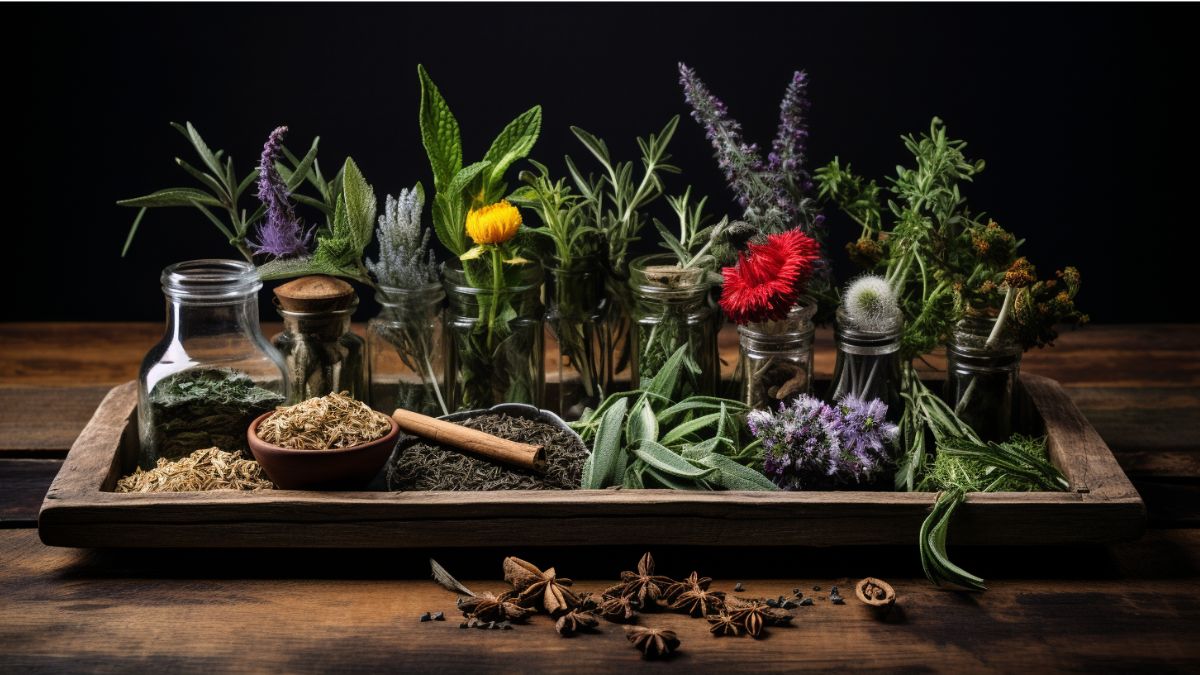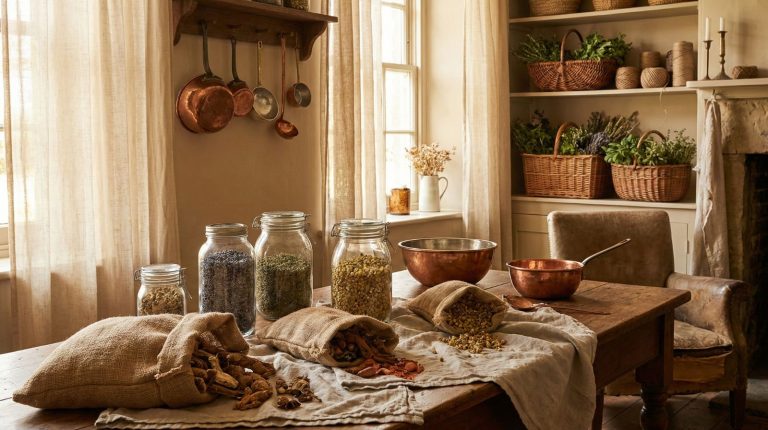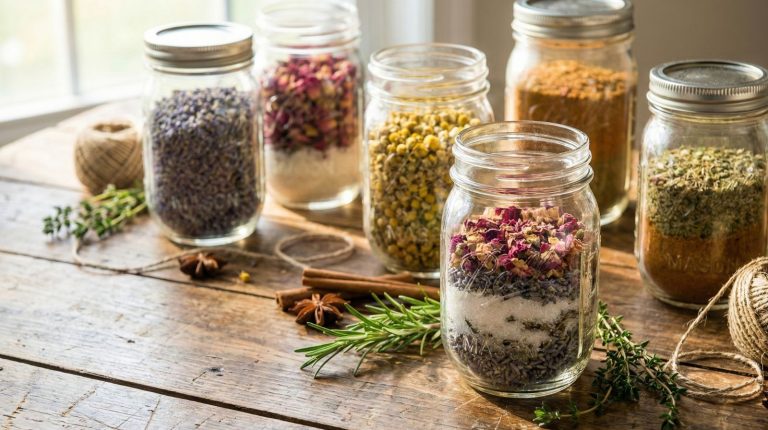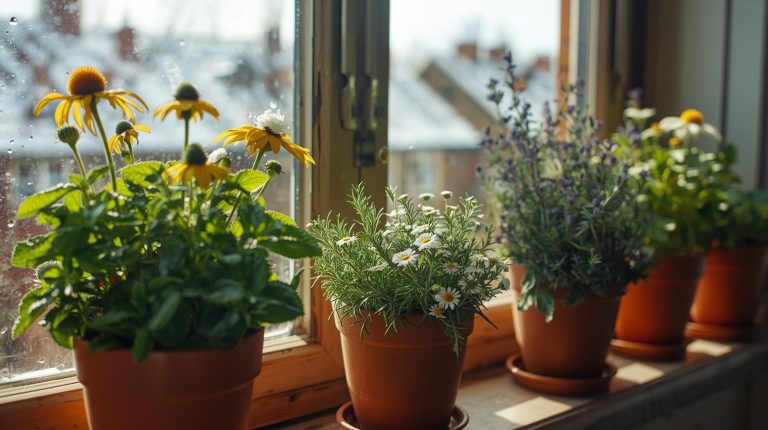Tired of relying on modern medicine for every ache and pain? Yearning for a more natural approach to healing? Look no further than the ancient wisdom of Native American remedies.
Uncover the lost secrets of their healing practices and explore the powerful medicinal properties of various plants. From the sacred rosemary, known for its memory-enhancing properties, to the versatile slippery elm, used for soothing sore throats and stomach aches, these remedies have stood the test of time.
Imagine a world where a simple cup of tea can alleviate your ailments. Join us on this journey of natural healing.
Key Takeaways
- Rosemary is considered sacred and has various uses such as improving memory and relieving muscle pain.
- Sumac has been used by Native Americans to address eye problems, relieve sore throats, and alleviate itching from poison ivy rashes.
- Blackberry has healing properties beyond its delicious fruits, such as healing sore throats and bleeding gums.
- Red Clover is highly valued and can be used to treat inflammation and respiratory problems, among other benefits.
Native American Remedies: Rosemary
Rosemary, a sacred herb to Native American tribes, holds incredible benefits for your well-being. Not only can it enhance your memory, but it also offers relief from muscle pain.
In Native American traditions, rosemary is revered for its sacredness and has been used both in culinary and medicinal practices for generations. When used topically, it can soothe sore joints, providing comfort and healing.
For a healing balm, combine 40 drops of rosemary essential oil with ½ cup of coconut oil and ¼ cup of olive oil. Apply this balm as needed to experience its soothing effects.
In modern medicine, rosemary is being researched for its potential uses and healing properties. By incorporating rosemary into your life, you can tap into the ancient wisdom of Native American remedies and promote your overall well-being.
Native American Remedies: Sumac
If you’re looking for a natural remedy to relieve sore throats, you should consider using sumac as a gargle. Sumac, a plant with vibrant red berries, has been used by Native Americans for centuries to address various health concerns. One of its traditional uses is as a gargle to alleviate throat discomfort.
To create a sumac gargle, you can follow this simple recipe:
| Ingredients | Instructions |
|---|---|
| Sumac berries | Crush the berries |
| Water | Boil water |
| Honey | Add honey to taste |
| Salt | Add a pinch of salt |
| Lemon juice | Squeeze lemon juice |
| Mix all ingredients | |
| Gargle the mixture | |
| Spit out after gargling |
In addition to its use as a gargle, sumac has various other applications. You can explore creative ways to incorporate sumac into your meals, such as using it as a spice in marinades or salad dressings.
Sumac tea also offers potential health benefits, including its ability to stop diarrhea and its anti-inflammatory properties. Furthermore, you can make a soothing poultice using sumac for itchy or irritated skin.
Lastly, sumac has been traditionally used to treat eye problems. By understanding the holistic benefits of sumac, you can enhance your well-being and explore natural remedies for various ailments.
Native American Remedies: Blackberry
When it comes to exploring natural remedies, don’t overlook the healing powers of blackberry beyond its delicious fruits. Native Americans have long recognized the medicinal properties of blackberries and incorporated them into their traditional medicine.
Blackberries have been used to create creative and tasty desserts, with their sweet and tart flavors adding a unique twist to any recipe. During blackberry season, it’s the perfect time to forage and preserve these nutrient-rich berries for year-round use.
In Native American medicine, blackberries have been used as remedies for various ailments, such as sore throats and bleeding gums. If you’re interested in cultivating your own blackberry plants, this guide can help you grow and care for them successfully.
And don’t forget to explore the rich folklore and legends surrounding the blackberry plant in Native American culture, adding a sense of depth and belonging to your healing journey.
Native American Remedies: Red Clover
Don’t overlook the benefits of red clover when it comes to finding natural relief for inflammation and respiratory problems. Native American tribes highly value red clover for its healing properties. It has been traditionally used to treat a variety of conditions.
Red clover tea, made with the flowers, boiling water, and honey, is a popular remedy for inflammation and respiratory issues. Sip on this soothing tea as needed for relief.
Red clover has also been studied scientifically, and research suggests that it may have antimicrobial and anti-inflammatory effects. However, like any herb, red clover may have potential side effects, so it’s important to use it responsibly.
Overall, red clover offers numerous health benefits and can be a valuable addition to your natural healing toolkit.
Native American Remedies: Cattails
Cattails are found everywhere near water and can be used as a major food source and preventive measure for respiratory ailments.
These versatile plants offer a wide range of benefits, both nutritionally and medicinally. The edible parts of cattails are the inner core, which can be harvested in the spring after discarding the outer leaves. Rich in nutrients, cattails provide a valuable source of vitamins and minerals.
In addition to their nutritional value, cattails have long been used as a natural remedy for respiratory ailments. Their pollen is known to have medicinal benefits, helping to alleviate symptoms such as coughing and congestion.
Moreover, cattails hold cultural significance in traditional Native American crafts and artwork, with their leaves and fibers being used to create baskets, mats, and even clothing.
Furthermore, cattails play a crucial role in wetland ecosystems, providing habitat and food for various wildlife species, filtering water, and preventing soil erosion. Their ecological importance can’t be understated.
Native American Remedies: Buckbrush
Now let’s delve into the fascinating world of Buckbrush.
Native American tribes have long revered Buckbrush for its traditional uses in treating cysts, tumors, and inflammation. This remarkable plant is also known for its ability to heal sores, wounds, and various mouth and throat conditions.
Buckbrush stands out among other Native American remedies for its effectiveness in addressing cysts and inflammation. Its medicinal properties have been trusted for generations.
When comparing the healing properties of Buckbrush with other remedies, it holds its own. The Native American tribes recognized its unique abilities and valued it for its healing potential.
Buckbrush tea offers a range of medicinal benefits, but it’s important to be aware of potential side effects. While generally safe, some individuals may experience allergic reactions or digestive discomfort.
To prepare Buckbrush tea, simply boil water and add ground Buckbrush. Drink this soothing tea as needed to find relief for sores, wounds, and other oral health issues. Buckbrush can also be integrated into modern herbal medicine practices to promote oral health and overall well-being.
With its rich history and therapeutic properties, Buckbrush continues to be a valuable asset in the world of herbal medicine.
Discover the power of The Doctor’s of Survival Home Remedies! Unlock a world of natural healing and protection for your health. Don’t be caught unprepared when medical supplies run out – invest in your well-being today.
Native American Remedies: Greenbriar
You’ll be intrigued by the various uses of the Greenbriar plant. Native American tribes have utilized it for centuries due to its numerous medicinal benefits. The plant, also known as Smilax, has the ability to relieve joint pain with its roots and create salves for sores and burns with its processed form.
Additionally, it can be used as a food source. Different types of Greenbriar exist, each with their own unique properties and uses. Harvesting and processing Greenbriar involves gathering the leaves and wilting them to apply to the skin.
By exploring the uses of Greenbriar, you’ll discover its remarkable healing capabilities and the sense of belonging it brings to those who embrace its holistic properties.
Native American Remedies: Saw Palmetto
When it comes to saw palmetto, you’ll be amazed by its diverse range of medicinal uses. This powerful herb has been utilized by Native American tribes for centuries, harnessing its healing properties to address various ailments. Here are some key points to consider:
- Health benefits: Saw palmetto has been studied extensively for its potential benefits in supporting prostate health, reducing hair loss, and improving urinary symptoms.
- Side effects: While generally considered safe, some individuals may experience mild side effects such as stomach discomfort or headaches. It’s always best to consult with a healthcare professional before starting any new herbal supplement.
- Dosage recommendations: The appropriate dosage of saw palmetto can vary depending on the specific health concern. It’s important to follow the recommended guidelines or consult with a healthcare provider for personalized advice.
- Native American uses: Native American tribes in Florida traditionally used saw palmetto for both food and medicinal purposes, recognizing its potential to alleviate abdominal pain, indigestion, and inflammation.
- Research and studies: Numerous studies have been conducted to investigate the efficacy of saw palmetto in various health conditions. While research is ongoing, some evidence suggests its potential benefits in prostate health and hair loss prevention.
Native American Remedies: Wild Rose
The wild rose possesses a multitude of benefits beyond its ornamental value, making it a valuable addition to your herbal repertoire.
One of the most popular ways to enjoy the benefits of wild rose is by making a soothing and aromatic tea. To prepare wild rose tea, simply steep young rose buds in boiling water for a few minutes, strain, and enjoy. Not only does this tea have a delightful flavor, but it also has diuretic properties, helping to flush out toxins from your body.
In Native American traditional medicine, wild rose has played a significant role in treating various ailments. Additionally, the ornamental value of wild rose can’t be overlooked. Its beautiful blooms can add a touch of elegance and charm to any garden or landscape.
Lastly, wild rose has been used as a natural remedy for sore throat relief, with the petals providing soothing effects when consumed or used in gargles. Embrace the versatility and healing powers of the wild rose in your herbal journey.
Native American Remedies: Slippery Elm
Slippery Elm, with its versatile applications and medicinal properties, is a valuable addition to your herbal repertoire. So, let’s delve into the world of Slippery Elm and discover the benefits it offers:
Slippery elm tea: Benefits and preparation techniques.
Brew a comforting cup of slippery elm tea by mixing powdered bark with boiling water. Add a touch of coconut milk and blackstrap molasses for added flavor and health benefits.
Healing properties of slippery elm for sore throat and stomach ailments.
Slippery elm is renowned for its soothing effect on sore throats. It coats the throat, reducing irritation and promoting healing. Additionally, it can provide relief for stomach ailments, such as acid reflux and gastritis.
Slippery elm as a natural remedy for bone and muscle weakness.
Slippery elm contains nutrients that promote bone and muscle health. Incorporating it into your diet or using it topically can help strengthen bones and alleviate muscle weakness.
Slippery Elm’s versatility extends beyond its medicinal applications. It can be used to make materials such as paper and furniture, showcasing its wide range of uses.
However, it’s important to exercise caution when consuming slippery elm tea. Some potential side effects include allergic reactions and interference with medication absorption. Consult with a healthcare professional before incorporating slippery elm into your routine to ensure it aligns with your specific needs and health conditions.
Native American Remedies: Ashwagandha
Now let’s explore the incredible healing properties of Ashwagandha. This uncommon plant has been used for centuries to address a variety of health concerns. One of its remarkable benefits is its positive impact on mental health.
Ashwagandha has been shown to reduce stress and anxiety, promoting a sense of calm and well-being. Incorporating Ashwagandha into your daily routine can help you manage stress more effectively and improve your overall mental well-being.
Not only does Ashwagandha support mental health, but it also plays a role in improving physical performance. By enhancing stamina and strength, it can boost your athletic performance and help you achieve your fitness goals.
Additionally, Ashwagandha has been used as a natural remedy for insomnia. Its calming properties can help promote a restful night’s sleep, allowing you to wake up feeling refreshed and energized.
There are various ways to incorporate Ashwagandha into your daily routine. You can make a soothing tea by mixing powdered Ashwagandha root with milk and water. Another option is to take it in supplement form, following the recommended dosage. Whichever method you choose, be sure to consume Ashwagandha in moderation and exercise caution.
Embrace the ancient wisdom of Ashwagandha and experience the transformative benefits it offers for your mind, body, and soul.
Native American Remedies: Black Gum Bark
To experience the medicinal properties of black gum bark, incorporate it into your herbal routine and discover its various uses. Black gum bark has been used by Native American tribes for centuries, and it holds a wealth of health benefits. Here are three ways you can explore the healing properties of black gum bark:
Medicinal properties of black gum bark:
Black gum bark is known for its anti-inflammatory and analgesic properties. It can help alleviate chest pains and reduce inflammation in the body.
Traditional uses of black gum tree:
Native American tribes traditionally used black gum bark and twigs to make tea for chest pains and respiratory ailments. They also used it as a traditional remedy for toothaches and sore throats.
Health benefits of black gum bark:
Black gum bark has been found to have antioxidant properties, which can help protect against cellular damage and promote overall well-being. It’s also believed to have antimicrobial properties, making it a natural remedy for minor cuts and infections.
Incorporating black gum bark into your herbal routine can provide you with a natural and holistic approach to health. Try making a black gum bark tea by crushing the bark or twigs and steeping them in boiling water. Sweeten with honey to taste. Explore the various uses of black gum tree and discover the healing properties of black gum bark for yourself.
Be self-reliant with The Doctor’s of Survival Home Remedies. Safeguard your health and protect your loved ones with a comprehensive collection of natural remedies. Don’t wait for disaster to strike – take charge of your health now.
Conclusion
Native American remedies offer a natural and holistic approach to healing that has been passed down through generations.
One example of their effectiveness is the case of Sarah, a woman suffering from chronic migraines. After exploring Native American remedies, she began using a combination of rosemary and ashwagandha as a tea, and experienced a significant reduction in the frequency and intensity of her migraines.
This is just one example of the power and potential of these ancient healing secrets.




